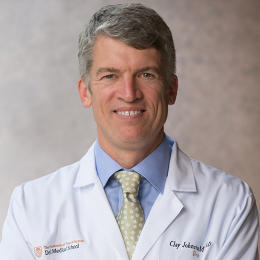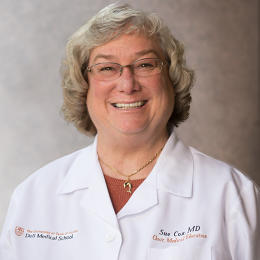REINVENTING MEDICAL SCHOOL
THE NEW MED SCHOOL AT THE UNIVERSITY OF TEXAS TAKES A TOTALLY NEW APPROACH TO TRAINING DOCTORS—AND COULD TURN HEALTH CARE UPSIDE DOWN.
The U.S. health care system is one in which price gouging is completely legal and cost inflation is out of control. According to a recent study from the Institute of Medicine, 30% of U.S. health care bills are waste, and if food-price inflation since 1945 matched that of health care, today we would be paying $55 for a dozen eggs. New doctors enter systems where financial incentives are in treating people as needed rather than keeping them healthy, and where legacy programs have no good reason to change.
But the Dell Medical School at the University of Texas at Austin, which will enroll its first class of 50 students in June 2016, is hoping to start a mini revolution to move things in a new direction. It will be the first new medical school at a tier 1 research university in more than 50 years (the most recent was Penn State in 1963), giving the school a unique opportunity to build its curriculum, facilities, and priorities from the ground up. Dell will be the fifth medical school in the UT system—followed soon by a sixth at UT Rio Grande Valley—but the first ever at the system's flagship campus. The $295 million Dell Seton Medical Center at the University of Texas, the institution's new teaching hospital, is scheduled to open in early 2017.
"We're in a position to question whether we're training physicians in the way we should to meet the goals of society, and to reevaluate the role of health care in addressing health problems," says Dr. Clay Johnston, Dell Medical School's inaugural dean. "Not just health problems, but our desire to be healthy people who stay as smart as we've ever been for as long as we possibly can."

Far from an ivory tower experiment, the Dell Medical School already has investment from the local community. In 2012, Travis County voters overwhelmingly passed a property tax increaseto help fund the school, which will receive about $35 million per year from the tax increase in addition to money from a federal matching program, the University of Texas system, and other philanthropic partners.
"The community here voted to have an increase in property tax for us to provide new models of care, particularly for them to be served," says Johnston. "We really have an obligation to think about better ways of doing both the educational parts of medicine and the care delivery parts of medicine. And beyond that, also thinking about what it means to create a model healthy city."
A few key features that will set the Dell Medical School apart are a leadership-focused year of self-directed study, a team-based curriculum, and a first-of-its-kind Design Institute for Health, a joint collaboration between the Dell Medical School and the College of Fine Arts, developed to apply design thinking to health care challenges and innovation.
"Typical medical school curricula force students to memorize inordinate amounts of material, only to forget most of it after they take the exam," says Dr. Susan Cox, executive vice dean for academics and chair of medical education at Dell. "There is little valuable learning in that process."

Instead, traditional lecture halls will be replaced with collaborative work spaces, and the context for physician education will be to train leaders in a better, future system—not the broken one we currently have.
"Why are we in this problem today where we're spending nearly $3 trillion on health care, far more than in other countries, and yet our health outcomes are far worse than countries that spend a tenth of that?" says Johnston. "The physician really is the most powerful professional in this system, who shouldn't be dragging us towards more care, but rather should be leading the charge to make sure we're optimally addressing society's needs for health."
Part of the school's objective, Johnston says, will be to help students understand systemic issues that shape individual health and lead the conversation about how to reinvent society's approach to health care and wellness.
"My problem isn't just the patient who sits directly in front of me, my problem is addressing a system that impacts the person right in front of me, and the 1,000 other patients that I'll see, and patients I don't want to ever have to see," Johnston says. "Giving that person some perspective about what it means to be a leader, what responsibilities come with that, what change management means, what are business practices that work? What's design thinking, and how can I work creatively to find solutions? That then becomes an important aspect of being a leader in the health system."
One of the ways that Dell Medical School hopes to accomplish this is through a signature third-year program called the Innovation, Leadership and Discovery Year, in which students will focus on individual projects in care delivery redesign, population health and informatics, or more traditional research, all aimed at solving systemic problems. There will also be an emphasis on team-based management and innovation.

"How do you get and receive feedback?" says Johnston. "How do you manage change within your organization? How do you know yourself well enough to know where you run into problems with change or with management? These are relevant in the patient/doctor experience, but they're also really relevant when you're trying to get people to work in teams from start to the end."
The school and its medical center's residency program will also integrate this philosophy. "We think that another problem is that we can train medical students however we want, but if we drop them in to the existing system, then we haven't done them any favors," says Johnston. "The residencies need to be aligned with the vision as well."
The Design Institute for Health, which will inform the Dell Medical School's clinical, educational, and research efforts, is led by two veterans of pioneering design firm IDEO: Stacey Chang, IDEO's former managing director of health and wellness, and Beto Lopez, former global lead of systems design at IDEO.

Chang and his team went out into the community for a couple of months and interviewed people from all walks of life: entrepreneurs who live in the new part of town, bus drivers on the local metro line, individuals who are undocumented immigrants who don't speak English, people who are musicians, comedians, tech workers, to get a sense of the variety of health needs in the community.
"We almost always start with what the human motivation is, and one of the biggest challenges in traditional health experiences is that the consumer has very, very little control over that experience," says Chang. "Our first project was a foundational design research project that really gets into what a community means when they talk about health."
Another focus of the Design Institute is physical space and the technology that inhabits it. "We're trying to redefine space in order to change the kind of interactions that health care professionals have with what we traditionally call patients, and also the kinds of interactions that health care professionals have with each other," says Chang. For example, rooms could be designed to reflect more hospitality than hospital, and patients could go directly to them with the elimination of the dreaded waiting room.

"The waiting room is kind of a silly thing, right?" says Chang. "There's no value in it other than occupying space that allows people to get frustrated. You're just twiddling your thumbs wondering why it's taking so long. Why can't we show them into the room that's traditionally called the exam room, which is now the consumer's room that they occupy? They can begin to actively engage with the questions that they're going to have to answer during the course of their health care experience."
The leaders at Dell know, of course, that they will face both inertia and active resistance to systemic change from legacy systems.
"We have the existing systems that have been built around fee-for-service care, and frankly they're still doing great," says Johnston, who advocates for innovating financial structures to incentivize value of care rather than quantity. "Most medical centers make a ton of money on their clinical operations. They've created these gigantic forces of health care. They focus so much on keeping that fortress intact that their finances are entirely independent, but they can't actually innovate. Then they've got a bunch of soldiers in there that they've got to keep happy and fed, meaning they have to generate all the procedures and everything else that will keep their organization working."

Starting from scratch outside these systems can be an advantage. "The Dell Medical School carries no legacy programs or historical baggage," says Cox. "It is free to create a culture of innovation, new thinking, and collaboration, and to design curriculum, strategies, and business models around the needs and opportunities of 21st-century medicine. Since we’re creating everything, we really don’t have to change anything. That’s a luxury that existing medical schools don’t have."
The idea is that as Dell and other schools demonstrate the effectiveness of new practices and procedures, other schools will start to embrace changes, if only to remain competitive.
The approach Dell is taking, Lopez says, is to introduce experiments so health care professionals can see the value of a different approach at small scale, and adopt it because it creates value, not because they're being told to do it.
"Part of what we're trying to create here is an ability for practitioners to drive a future-facing ecosystem," Lopez says. "If we were to create practitioners that could only thrive in the health care system that exists today, we'd be doing ourselves a disservice, because what we're trying to do here is to change that ecosystem."
沒有留言:
張貼留言